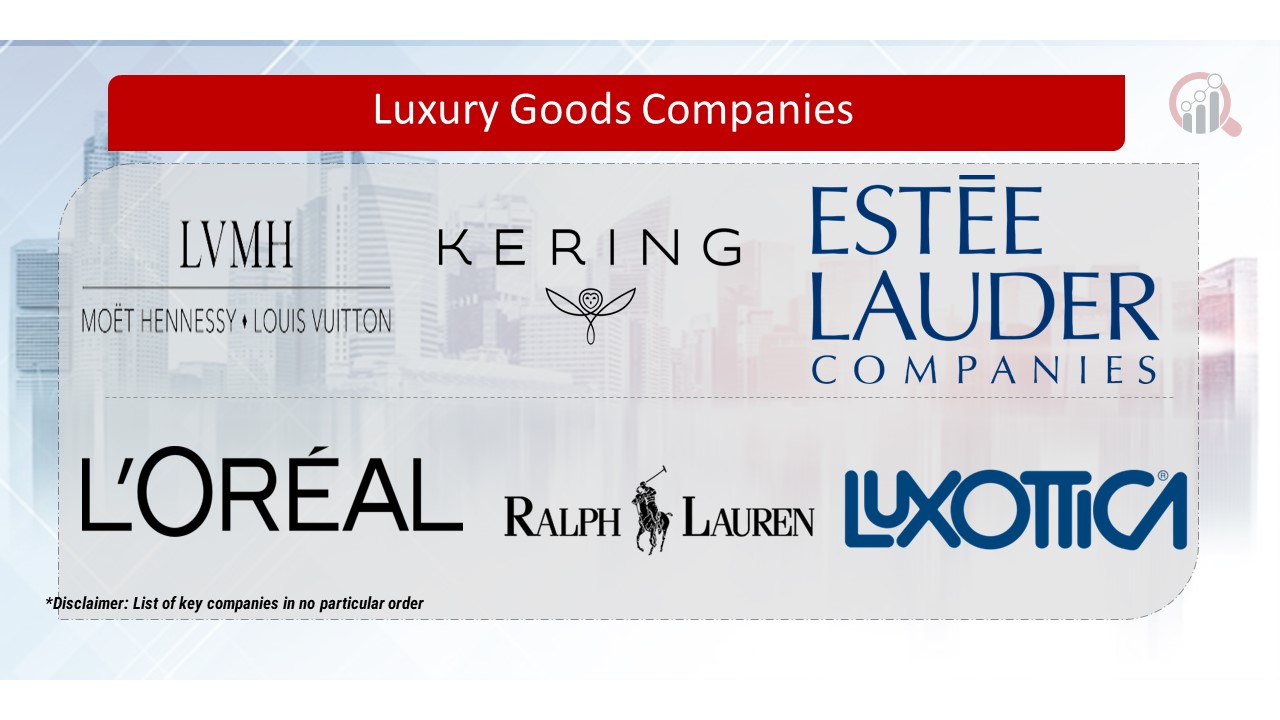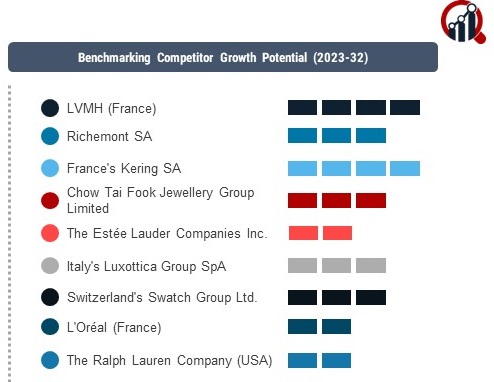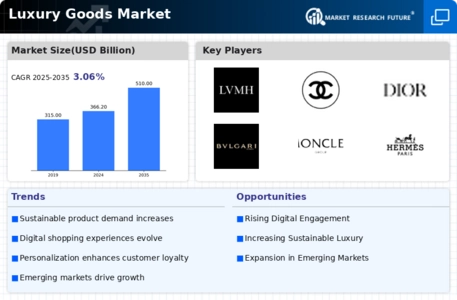Top Industry Leaders in the Luxury Goods Market

In response to changing consumer preferences and market dynamics, companies in the luxury goods sector have adopted various strategies to stay competitive. This includes diversifying product offerings to appeal to a broader audience while maintaining exclusivity, expanding into emerging markets with high growth potential, leveraging digital platforms for marketing and sales, and investing in sustainability initiatives to align with evolving consumer values.
Market share analysis in the luxury goods sector is influenced by several factors, including brand recognition, product innovation, pricing strategies, distribution channels, and customer experience. Brands with strong global recognition and a loyal customer base tend to command a larger market share, while those that fail to adapt to changing trends risk losing ground to competitors.
In addition to established players, the luxury goods market also sees the emergence of new and niche companies aiming to disrupt traditional business models and capture market share. These newcomers often differentiate themselves through unique offerings, innovative marketing approaches, and a focus on sustainability or ethical practices. While they may face challenges in competing with industry giants, their agility and fresh perspectives enable them to carve out a niche and attract discerning consumers seeking alternatives to mainstream luxury brands.
Recent industry news highlights the increasing importance of digital transformation in the luxury goods sector, with companies investing heavily in e-commerce platforms, virtual showrooms, and augmented reality experiences to enhance customer engagement and drive sales. Moreover, partnerships with online marketplaces and social media influencers have become integral to brand promotion and reaching younger demographics.
Another notable trend in the luxury goods market is the growing interest in sustainable and ethical practices, driven by consumer demand for environmentally friendly products and transparent supply chains. Companies are investing in eco-friendly materials, reducing carbon emissions, and supporting social causes to appeal to socially conscious consumers and differentiate themselves in a crowded marketplace.
Furthermore, current company investment trends reflect a strategic focus on expanding brand presence in key growth markets, particularly in Asia-Pacific where rising affluence and changing lifestyles are driving demand for luxury goods. Investments in retail infrastructure, marketing campaigns, and digital capabilities are aimed at capturing market share and capitalizing on the region's lucrative opportunities.
Overall, the competitive scenario in the luxury goods market is characterized by intense rivalry among established players, the emergence of new challengers, and ongoing shifts in consumer preferences and market dynamics. Companies must continuously innovate, adapt to changing trends, and invest in strategies that enhance brand relevance and resonate with discerning consumers to maintain their competitive edge in this dynamic industry landscape.
Luxury Goods Industry Developments
April 2023:
Titled ICONS is a new jewelry product capsule line that Hey Harper, a high-end jewelry company based in Portugal, has launched in the UK. Among the pieces in the collection are the GILDED THORNS Ear Cuff, PETALS SPIRAL Bracelet, CRYSTAL BLOOM Ring, and Brooch GARDEN OF LIGHT.
Key Companies in the Luxury Goods Market Include –
- LVMH (France)
- Richemont SA
- France's Kering SA
- Chow Tai Fook Jewellery Group Limited
- The Estée Lauder Companies Inc.
- Italy's Luxottica Group SpA
- Switzerland's Swatch Group Ltd.
- L'Oréal (France)
- The Ralph Lauren Company (USA)










